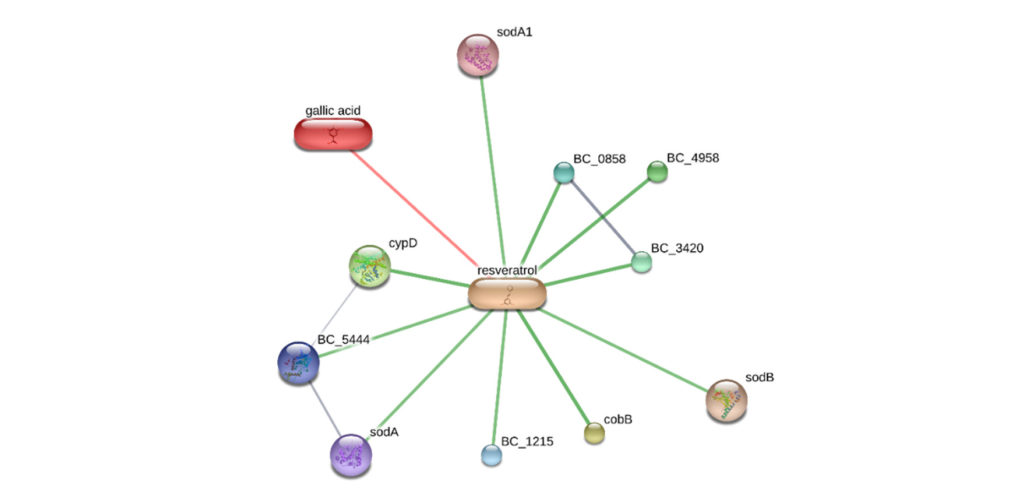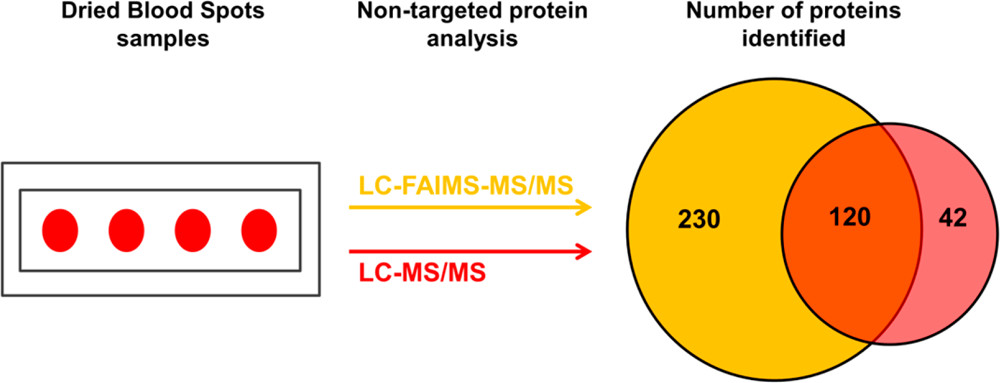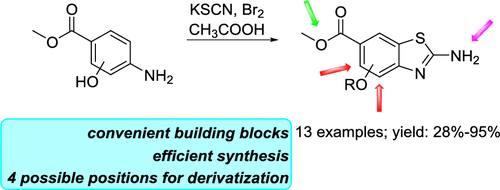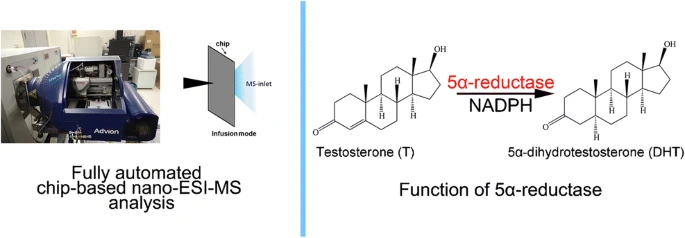Selcuk University, University “G. d’Annunzio” of Chieti-Pescara, University of Perugia, University of Urbino

Abstract
Coronilla species, belonging to the Coronilla genus (Fabaceae), have long been used in traditional medicine for treating cold, diabetes, pain, and as cardiotonics. The goal of the present study was to explore the phytochemical composition and pharmaco-toxicological properties of C. minima. In this regard, phenolic content, scavenging/reducing properties and antimicrobial activity toward pathogen bacterial (Escherichia coli, Pseudomonas aeruginosa, Bacillus cereus, Staphylococcus aureus) and fungal strains (Candida albicans, C. tropicalis, Aspergillus tubigensis and A. minutus) were investigated. Extract effects on human colon cancer HCT116 cell viability were also assayed. Finally, a bioinformatics approach was conducted with the aim to identify putative microbial and human protein targets underlying antibacterial, antimycotic, and antiproliferative effects.
Analysis was performed by LC/MS using the Advion expression Compact Mass Spectrometer (CMS).
University of Oklahoma Health Sciences Center, Christian Medical College, Veterans Administration Medical Center, University of Montreal
Abstract
A major source of epilepsy is Neurocysticercosis (NCC), caused by Taenia solium infection. Solitary cysticercus granuloma (SCG), a sub-group of NCC induced epilepsy, is the most common form of NCC in India. Current diagnostic criteria for SCG epilepsy require brain imaging which may not be available in communities where the disease is endemic. Identification of serum changes and potential biomolecules that could distinguish SCG epilepsy from idiopathic generalized epilepsy (IE), without the initial need for imaging, could assist in disease identification, understanding, and treatment. The objective here was to investigate, using mass spectrometry (MS), sera biomolecule differences between patients with SCG epilepsy or IE to help distinguish these disorders based on physiological differences, to understand underlying phenotypes and mechanisms, and to lay ground work for future therapeutic and biomarker analyses.
Analysis was performed by ESI ionization using the Advion Interchim Scientific® expression® Compact Mass Spectrometer (CMS).
Authors: Cecilie Rosting, Jinglei Yu, and Helen J. Cooper*
Abstract
Despite the great potential of dried blood spots (DBS) as a source of endogenous proteins for biomarker discovery, the literature relating to nontargeted bottom-up proteomics of DBS is sparse, primarily due to the inherent complexity and very high dynamic range associated with these samples. Here, we present proof-of-concept results in which we have coupled high field asymmetric waveform ion mobility spectrometry (FAIMS) with liquid chromatography–tandem mass spectrometry (LC–MS/MS) for nontargeted bottom-up proteomics of DBS with the aim of addressing these challenges.
We, and others, have previously demonstrated the benefits of FAIMS more generally in proteomics including improved signal-to-noise and extended proteome coverage, and the aim of the current work was to extend those benefits specifically to DBS. The DBS samples were either extracted by the more traditional manual “punch and elute” approach or by an automated liquid surface extraction (LESA) approach prior to trypsin digestion. The resulting samples were analyzed by LC–MS/MS and LC–FAIMS–MS/MS analysis. The results show that the total number of proteins identified increased by ∼50% for the punch and elute samples and ∼45% for the LESA samples in the LC–FAIMS–MS/MS analysis. For both the punch and elute samples and the LESA samples, ∼30% of the total proteins identified were observed in both the LC–MS/MS and the LC–FAIMS–MS/MS data sets, illustrating the complementarity of the approaches.
Overall, this work demonstrates the benefits of inclusion of FAIMS for nontargeted proteomics of DBS.

Kyungpook National University, Dankook University, Ulsan National Institute of Science and Technology, South Korea; Icahn School of Medicine at Mount Sinai, United States
Abstract
Sphingosine kinase1 (SphK1) is an acetyl-CoA dependent acetyltransferase which acts on cyclooxygenase2 (COX2) in neurons in a model of Alzheimer’s disease (AD). However, the mechanism underlying this activity was unexplored. Here we show that N-acetyl sphingosine (N-AS) is first generated by acetyl-CoA and sphingosine through SphK1. N-AS then acetylates serine 565 (S565) of COX2, and the N-AS-acetylated COX2 induces the production of specialized pro-resolving mediators (SPMs). In a mouse model of AD, microglia show a reduction in N-AS generation, leading to decreased acetyl-S565 COX2 and SPM production. Treatment with N-AS increases acetylated COX2 and N-AS-triggered SPMs in microglia of AD mice, leading to resolution of neuroinflammation, an increase in microglial phagocytosis, and improved memory. Taken together, these results identify a role of N-AS in the dysfunction of microglia in AD.
Mass analysis was carried out using an Advion expression® Compact Mass Spectrometer (CMS).
National Organization for Drug Control and Research, Cairo University
Abstract
Stability-indicating reversed-phase high-performance liquid chromatography (RP-HPLC) and normal-phase high-performance thin-layer chromatography (NP-HPTLC) methods have been developed for the determination of palonosetron which is a potent antiemetic drug used with chemotherapy. Forced degradation studies were performed on palonosetron to study its stability behavior. The drug was subjected to acid, base, neutral hydrolysis, oxidation, thermal and photolytic conditions. Mass analysis has been performed to elucidate the oxidative degradants by Advion compact mass spectrometer. HPLC separation was achieved on PerfectChrom 100 C4 (250 × 4.6 mm, 5 μm particle size) column using buffer (20 mM dipotassium hydrogen orthophosphate, adjusted with phosphoric acid to pH 2.5):acetonitrile:methanol (60:30:10, v/v) as the mobile phase with isocratic mode at a flow rate of 1 mL/min using photodiode array detector (PAD) at 210 nm. The method showed adequate sensitivity concerning linearity, accuracy and precision over the range of 0.1–10 μg/mL. Limit of detection (LOD) and limit of quantification (LOQ) were determined to be 0.03 μg/mL and 0.09 μg/mL, respectively. HPTLC separation was carried out on aluminum plates pre-coated with silica gel 60 F254 using methanol:ammonia (10:0.5, v/v) as the mobile phase. CAMAG scanner was operated at 254 nm for the densitometric measurement in the absorbance mode. A polynomial relationship was constructed in concentration range of 0.1–2 μg/band, with LOD and LOQ 0.02 μg/band and 0.06 μg/band, respectively. The cited chromatographic methods were successfully applied to the determination of palonosetron in the presence of its degradation products and additives in the commercially available vials. Method validation was performed as per the ICH guidelines confirming methods robustness to be used in quality control laboratories. Statistical comparisons have been performed between the results of the cited chromatographic methods and those of the official one using Student’s ttest and F test values at 95% confidence interval level, revealing good accuracy and precision.
University of Ljubljana
Abstract

Benzo[d]thiazole is widely used in synthetic and medicinal chemistry, and it is a component of many compounds and drugs that have several different bioactivities. Herein, we describe an elegant pathway for synthesis of methyl 4- and 5-hydroxy-2-amino-benzo[d]thiazole-6-carboxylates as building blocks that can be substituted at four different positions on the bicycle and thus offer the possibility to thoroughly explore the chemical space around the molecule studied as a ligand for the chosen target. A series of 12 new compounds was prepared using the described methods and Williamson ether synthesis.
The Advion Interchim Scientific suite of systems and consumables allows users to harness the power of mass spectrometry, flash chromatography, prep LC and more. Simple and robust, download our brochure to learn more about:
- The Advion Interchim Scientific expression® compact mass spectrometer (CMS): A fast and easy analytical tool for the organic chemist. Ideal for fast reaction monitoring, the expression® CMS features a single quadrupole that can adapt to multiple ionization sources in seconds, including both ESI and APCI. The expression® CMS offers a variety of novel sampling techniques, including fast assay methods for liquids, solids, gases, and even air-sensitive compounds.
- Direct mass analysis of TLC plates in 30 seconds at the push of a button with Plate Express™
- One-touch analysis of solids and liquid samples with the ASAP® probe
- LC/CMS
- puriFlash® ultra performance flash purification: Ideal for method development and purification of rare and high added value compounds, the Interchim family of puriFlash® systems offer users a wide range of throughput options and the highest recovery rates at >95%.
- Mass-Guided Purification: the Interchim puriFlash® + Advion CMS offers the ideal solution for Flash-MS, and can provide fraction identification in <30 seconds.
-
Fill out the form to download the full Advion Interchim Scientific brochure now.
The brain is a remarkably complex organ and cholesterol homeostasis underpins brain function. It is known that cholesterol is not evenly distributed across different brain regions; however, the precise map of cholesterol metabolism in the brain remains unclear. If cholesterol metabolism is to be correlated with brain function it is essential to generate such a map. Here we describe an advanced mass spectrometry platform to reveal spatial cholesterol metabolism in situ at 400-µm spot diameter on 10-µm tissue slices from mouse brain. We mapped, not only cholesterol, but also other biologically active sterols arising from cholesterol turnover in both wild type and mice lacking cholesterol 24S-hydroxylase (CYP46A1), the major cholesterol metabolizing enzyme.
Shanghai University of Traditional Chinese Medicine
Abstract

The 5α-reductase converts testosterone to dihydrotestosterone (DHT), and excess DHT could cause androgen-related diseases such as androgenetic alopecia and benign prostatic hyperplasia (BPH). To discover new 5α-reductase inhibitors, effective drug screening method with high throughput is thus essential. In this study, fully automated chip-based nanoelectrospray ionization-mass spectrometry (nano-ESI-MS) was innovatively utilized as a screening tool for 5α-reductase inhibitory assay in direct infusion mode, which simplified sample pretreatment and greatly improved experimental efficiency. The preliminary data indicated that curcumin, a natural anti-inflammatory compound, exhibited notably 5α-reductase inhibition activity. Moreover, the obtained results of the chip-based nano-ESI-MS were well consistent with those of HPLC-MS, which suggested that the chip-based nano-ESI-MS could be treated as a rapid and high-throughput drugs screening strategy in pharmaceutical development.




